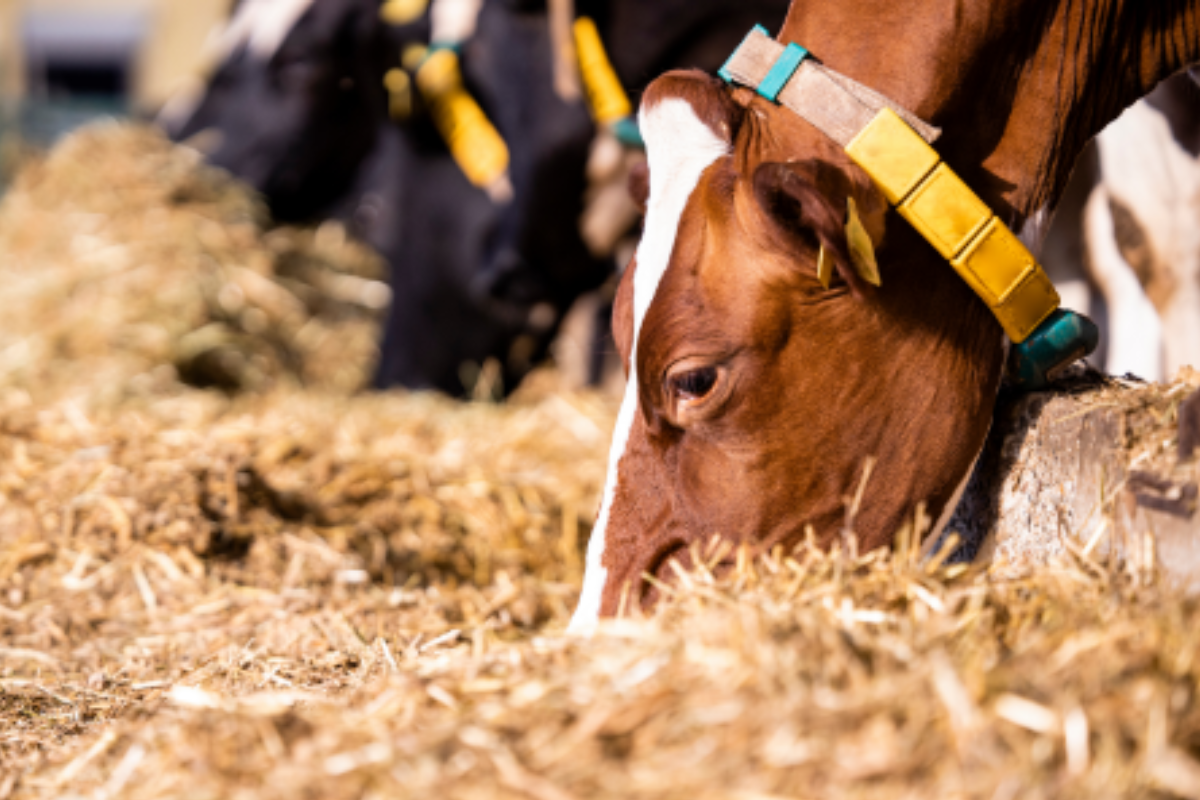How to Ensure a Smooth Start into Lactation After Calving.
The calving phase is one of the most critical stages of milk production. It provides the basis for a healthy and successful lactation.
Complications during this time can quickly lead to economic losses via reduced milk yield or an increased risk of secondary diseases. Studies show that about 20% of the animals leaving the herds do so in the first 40 days of lactation. That fact highlights that cows need special attention during the peripartum period.
Deficits in the calving phase and their consequences.
The main problem during this period is an imbalance between nutrient intake and release. The metabolism of dairy cows is subject to drastic changes around the time of calving. Hormonal changes and stress due to factors like the calving itself, or a variation of diet usually lead to reduced feed intake.
At the same time, the onset of lactation rapidly increases the need for energy and nutrients. The resulting nutritional deficit is the seed for many clinical diseases. Often, subclinical diseases that are underestimated in their impact on the herd lead to a decline in production performance. Especially such subclinical cases depress the profitability of the dairy farm, as they often remain undiscovered. Also, they multiply the risk of secondary diseases.
The most common metabolic diseases in the period around calving are:
ketosis (also known as acetonemia) and
hypocalcemia, a pathological calcium deficiency.
Estimates say that on average up to seven percent of cows in a herd suffer from clinical hypocalcemia and about 50% from subclinical hypocalcemia. The statistics for ketosis are similar. The typical symptoms of classical milk fever illustrate the central importance of calcium for muscles and nerves: the cow is initially hypersensitive and has an unsteady gait, then becomes very sluggish and finally lies flat on her side. Circulatory collapse, coma, and death are the endpoint of this development.
Ketosis is caused by a lack of energy in the first days of lactation. If the cow experiences an energy deficit, she begins to mobilize more body fat to cover her energy needs. However, fat cannot be fully used for energy production. As a result, ketone bodies form, then accumulate in the bloodstream and eventually trigger ketosis. The ketone bodies, in turn, reduce the appetite of the cow—a vicious circle.
How to prevent diseases after calving.
To optimally support dairy cows during this period, Biochem has products in its portfolio that help prevent milk fever and ketosis. Cal Gel contains highly available calcium that is administered orally. The product includes inorganic calcium (calcium chloride) and organic calcium (calcium propionate and calcium acetate).
Calcium chloride is a tried and tested remedy and is often used to prevent hypocalcemia. The main advantage of calcium chloride is that the calcium content in the blood increases rapidly. However, the effect is not sustainable. In contrast, organic calcium sources have a somewhat delayed but lasting positive effect on calcium levels. Therefore, to increase the calcium level in the animal’s blood both quickly and permanently, the combination of the different sources of calcium is ideal.
In addition, magnesium chloride and vitamin D3 contained in Cal Gel provide improved milk fever prophylaxis.
The advantages of Cal Gel summarized:
Ensures a sufficient level of calcium in the cow’s blood
Optimal supply through three calcium sources
Easy and safe handling
Keto Gel provides excellent support in the management of ketosis problems. It contains high amounts of propylene glycol, one of the essential substances for the successful treatment of ketosis in cows. It ensures that the mobilized fatty acids are used more efficiently in the metabolism. That improves the energy status of the animals.
In addition, betaine and niacin contained in Keto Gel relieve the liver. Vitamin B12 helps in the efficient use of the propionate produced in the rumen.
The advantages of Keto Gel summarized:
Rapid support of fat metabolism
Reduced mobilization of body fat
Simple and safe to use
The practical feeding bottle of Cal Gel and Keto Gel makes the application of the gels fast and user-friendly. And most importantly, it is easy on the animals.
Additional rumen support.
Another option to help the cow through the difficult calving period is the use of RumiPro Appetizer. This product supports the sensitive rumen symbiosis in times of reduced feed intake. After calving, almost all dairy cows eat too little, at times leading to the "off feed" syndrome, where food intake comes to a complete standstill. Rumen symbiosis which depends on continuous feed intake may then collapse.
Providing the cow in this situation with easily digestible material and additives that promote rumen bacteria is the key to a successful treatment. The ingredients of RumiPro Appetizer supply the rumen microbes with readily fermentable substances they need for their activity and growth. The optimal rumen conditions, caused by a synbiotic yeast combination, increase the effectivity and welfare of rumen microbes.
RumiPro Appetizer is not only suitable for cows right after calving. Whenever the animals show reduced feed intake or chewing activity, this product provides optimal support and maintains rumen symbiosis. The advantages of RumiPro Appetizer summarized:
Promotes feed intake
Stabilizes the rumen function
Increases well-being
Three products, numerous benefits.
The combination of all three products, Cal Gel, Keto Gel, and Rumi Pro Appetizer, enables ideal and targeted support, tailored towards the individual needs of the animals. That prevents metabolic diseases typical of calving. If already necessary, treatment can also be supported.
If the start into lactation goes smoothly, the risk of secondary diseases decreases, and lactation performance improves.











